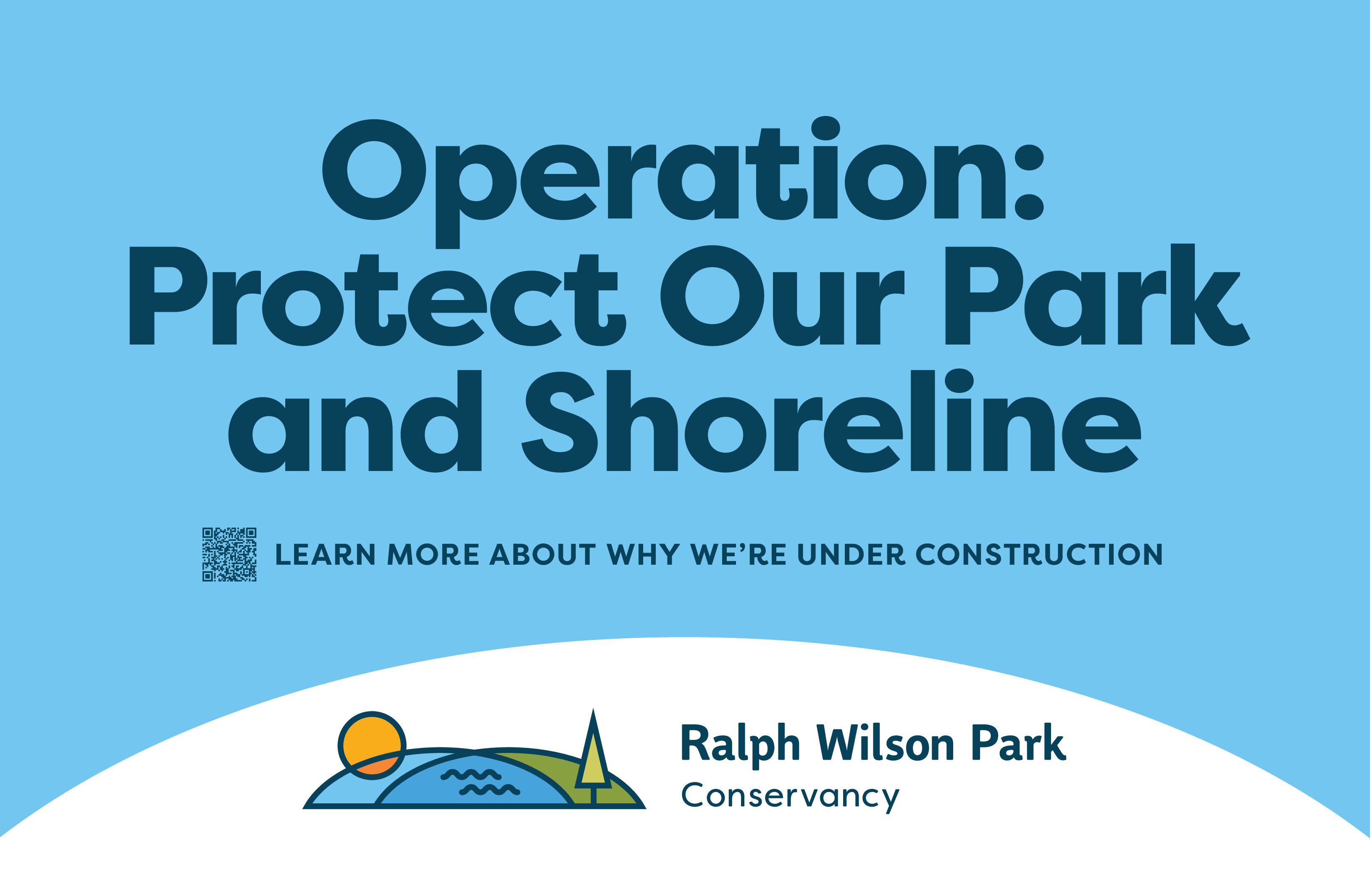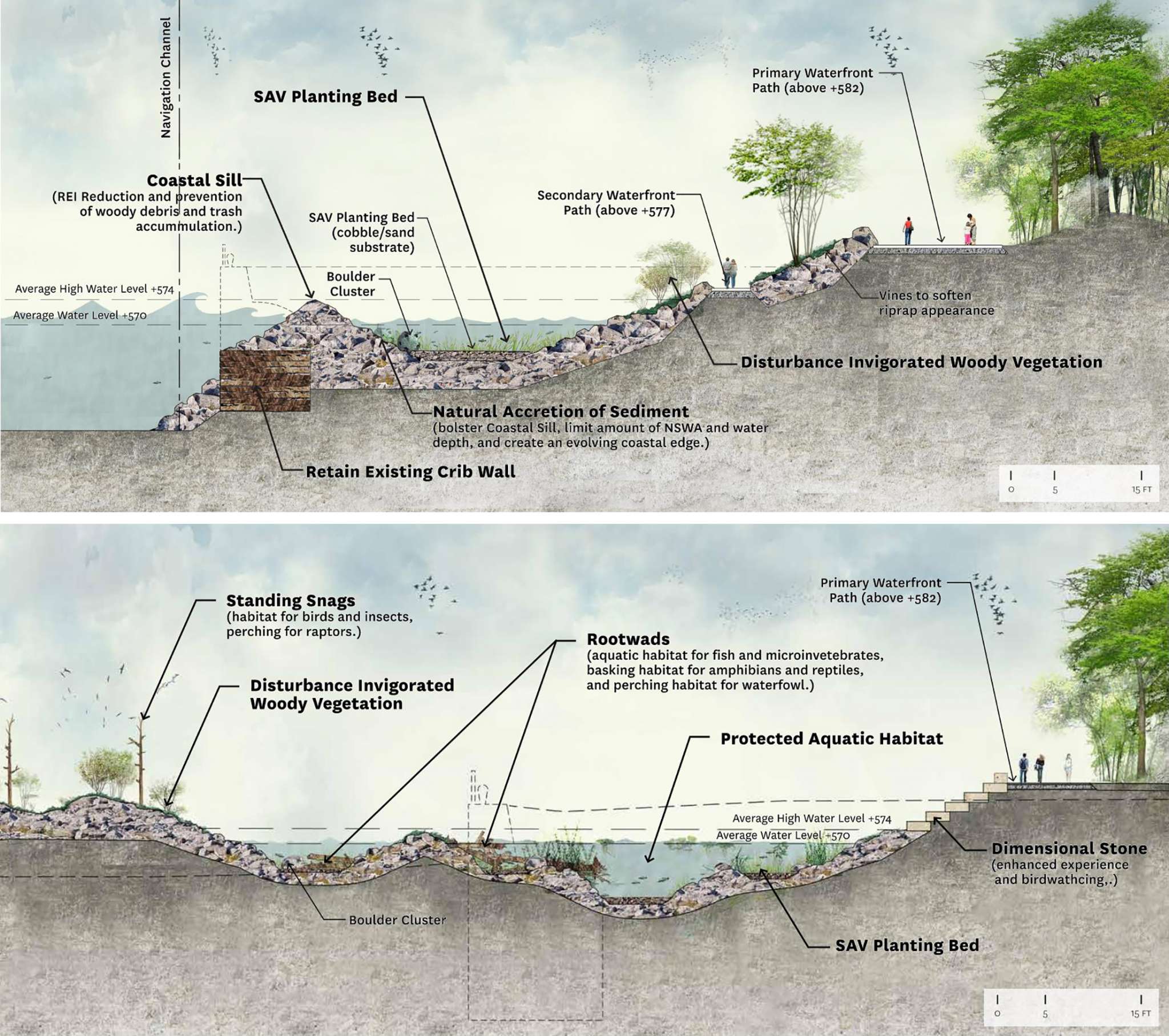
How Will These Changes Protect The Park?
The park has been deteriorating and we needed to re-grade it to protect against rising water levels, increasing storms, and weather events. The park has been battered by storms. The majority of the park floods during a storm, and if the park wasn’t being rebuilt into the community’s vision, it would likely continue to be underwater during storm events and further compromise the seawall and park.
There are two reasons for this: primarily, climate change. We are experiencing more frequent and intense storms. There are intense winds and waves that pick-up strength as they come from the west part of Lake Erie. Those winds are funneled into the park — our shoreline and Canada’s creates a funnel as the lake flows into the Niagara River and the park is in the bullseye.
The second reason is that the hard shoreline doesn’t absorb and dissipate the wave action, and the shallow water level of Lake Erie creates a bathtub effect that increases, rather than decreases, the waves.

To protect against flooding from increased weather events and rising water, we are creating a new, resilient shoreline; raising the elevation of the park near the shoreline (581’ above sea level – currently the park is at 579’ above sea level); introducing changes in elevation (hills) up to 30 feet; and ensuring that the park will be ADA accessible, which it currently is not.
This PowerPoint provides a visual overview of the ways in which we are improving shoreline resiliency.
We prioritized 4 shoreline design goals:
- Structural resilience
- Flood protection
- Ecological restoration
- Enhanced water access and experience
We engaged the experts to research and analyze what we can do to better protect the park and surrounding community. We introduced shoreline complexity, a departure from the straight, hard shoreline. We are replacing the vertical, hard sea wall with an armored slope of marine rock. Right now, wave energy reflects of the hard, vertical sea wall and exacerbates the disturbance in the water – it creates a bathtub effect where the water hits the sea wall, bounces off, gains steam, and then come backs stronger. We are replacing that with armored slopes – very large stone with gaps in between. The wave energy will move through those openings and get dissipated instead of getting reflected and more chaotic.
We analyzed the potential impact of storms and waves on the park after we raise the elevation of the bulkhead from 579’ ft above sea level to 581’ and replaced the hard, vertical sea wall with an armored slope and we found that the elevated bulkhead reduced flooding and wave impact.
Once the park is completed, we will have planted about 2,600 new trees (approximately 5x the amount of trees removed) that will provide comfort through shade and wind protection and seasonal interest through flowering and fall colors to all visitors. Some of the removed trees will find a second life in the inlet area as rootwads and standing snags to enhance the new habitat being created.
The trees were removed in the early winter of 2022 as a way to protect the Northern Long Eared Bats, who were in hibernation elsewhere by that time. This was a requirement of the regulatory agencies to protect the species.









